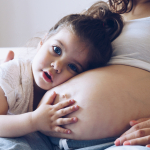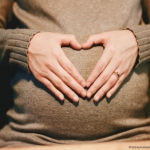Menstrual irregularities, including amenorrhea, are common among women with eating disorders. Given the menstrual abnormalities, there has been concern that women with eating disorders might be less likely to conceive naturally. A recent study has examined rates of fertility treatment among women with eating disorders.
In this study, women were enrolled prenatally as part of Generation R study, a prospective population cohort study based in the Netherlands. Outcomes were assessed in women who reported a history (recent or past) of anorexia nervosa (n = 160), bulimia nervosa (n = 265), or both (n = 130). Women with a history of psychiatric disorders other than eating disorders (n = 1396) served as a comparison group. Outcomes in these groups were compared to outcomes in women without any psychiatric disorder (n = 4367).
Prevalence of Fertility Treatment
Compared to women without psychiatric disorders, women with bulimia nervosa had an increased likelihood (odds ratio, OR 2.3) of undergoing fertility treatment. Interestingly, all of these women had bulimia in the past but not in the year prior to pregnancy. Rates of fertility treatment in women with anorexia nervosa were similar to those observed in women with no psychiatric illness. Pre-pregnancy body mass index did not explain the observed findings.
Prevalence of Unplanned Pregnancies, Multiple Births
The prevalence of unplanned pregnancies was higher across all eating disorder groups (32.3% for women with AN, 25.3% for women with BN, and 32.3% for women with AN + BN) than among women without psychiatric disorders (22.3%). Similarly, women with other psychiatric disorders also reported more unplanned pregnancies (29.3%). Women with AN in the year prior to pregnancy reported the highest prevalence of unplanned pregnancies (55.2%).
Women with any type of eating disorder had an increased odds of giving birth to twins (anorexia nervosa, OR 2.7; bulimia nervosa, OR 2.7; anorexia and bulimia nervosa, OR 3.9).
Clinical Implications
One of the really interesting, and somewhat unexpected, findings in this study is that bulimia nervosa, but not anorexia nervosa, was associated with higher rates of fertility treatment. One explanation for this finding may be that women with anorexia nervosa were more likely to express ambivalent feelings about pregnancy (adjusted OR 5.0) compared to women with bulimia. This study did not look at fertility per se but measured rates of fertility treatment; it is possible that because anorexic women are more likely to be ambivalent about pregnancy, they may be less likely to seek treatment if unable to conceive.
The authors raise another possibility for this finding. They refer to evidence that polycystic ovarian syndrome or PCOS has been associated with bulimia and binge eating; therefore, it is possible that infertility in women with bulimia reflects an underlying diagnosis of PCOS. This explanation is consistent with the finding that higher infertility rates were observed in women with a remote history of bulimia and were not associated with weight status.
Overall the data are reassuring; however, we cannot assume that all women with eating disorders have normal fertility rates. While larger population-based studies suggest that women with histories of eating disorders do well, smaller studies (often with clinically derived samples and thus probably focusing on women with more severe or active illness) suggest that some women may have reduced fertility and may be less able to conceive naturally.
Ruta Nonacs, MD PhD
Micali N, Dos-Santos-Silva I, De Stavola B, et al. Fertility treatment, twin births, and unplanned pregnancies in women with eating disorders: findings from a population-based birth cohort. BJOG. 2014; 121(4):408-16.








Thanks for the info!